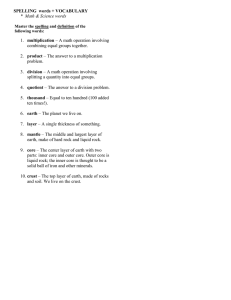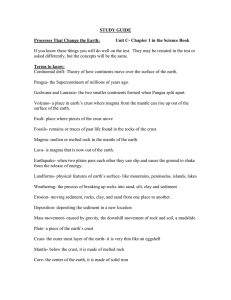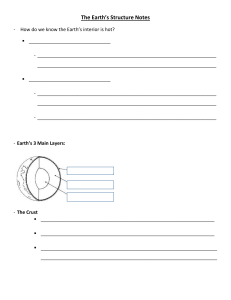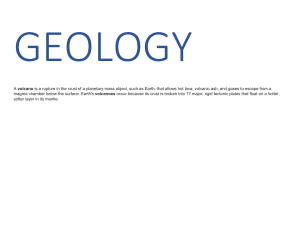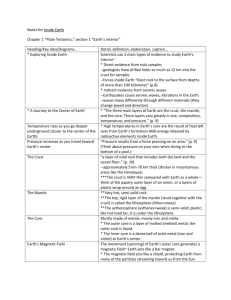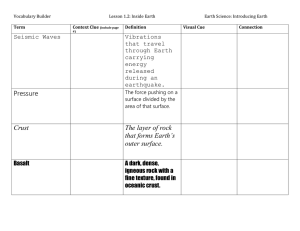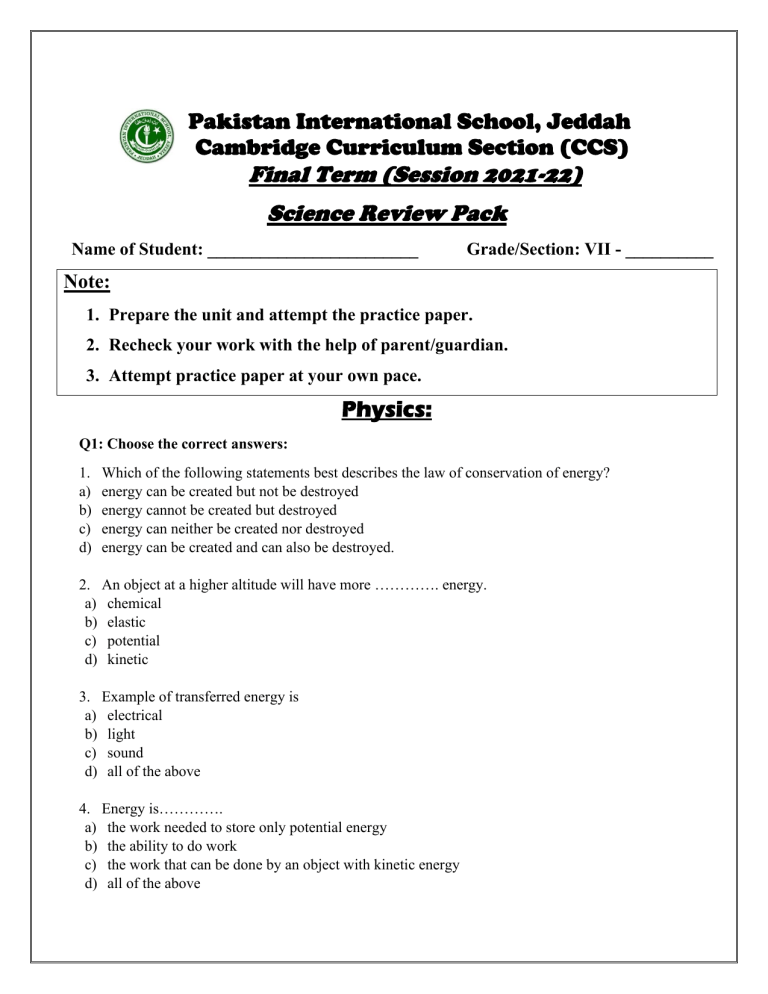
Pakistan International School, Jeddah Cambridge Curriculum Section (CCS) Final Term (Session 2021-22) Science Review Pack Name of Student: ________________________ Grade/Section: VII - __________ Note: 1. Prepare the unit and attempt the practice paper. 2. Recheck your work with the help of parent/guardian. 3. Attempt practice paper at your own pace. Physics: Q1: Choose the correct answers: 1. a) b) c) d) Which of the following statements best describes the law of conservation of energy? energy can be created but not be destroyed energy cannot be created but destroyed energy can neither be created nor destroyed energy can be created and can also be destroyed. 2. An object at a higher altitude will have more …………. energy. a) chemical b) elastic c) potential d) kinetic 3. Example of transferred energy is a) electrical b) light c) sound d) all of the above 4. Energy is…………. a) the work needed to store only potential energy b) the ability to do work c) the work that can be done by an object with kinetic energy d) all of the above 5. A stretched trampoline stores which type of energy? a) nuclear b) chemical c) elastic d) kinetic 6. How do cars get their supply of energy? a) from food b) from coal c) from petrol d) from sunlight 7. What type of energy store is a fuel? a) nuclear b) chemical c) elastic d) kinetic 8. In which of the following examples chemical energy converts to light energy? a) torch b) rubber band c) gun d) kettle 9. coal, natural gas and petrol are all stores of …………. Energy. a) nuclear b) heat c) chemical d) gravitational potential 10. How many joules are there in 1K joules? a) 10 joules b) 100 joules c) 1000 joules d) 10,000 joules Q2: Match the devices given in the box to their respective energy transfer diagrams. Computer electrical energy light energy electrical energy chemical energy toaster car plant heat energy chemical energy light energy+sound energy+heat energy kinetic energy Q3: Look at the following diagram and answer the questions. The diagram represents the input energy and output energy of a motorbike. b. Name the type(s) of energy which are wasted energy. _________________________________. Q4: For each of the devices write the useful energy and the wasted energy. Device useful energy wasted energy radio vacuum cleaner stove Q5: Peter works in a circus. He runs along the ground, jumps onto the trampoline and goes high up into the air. a) Name the type of energy Peter has when he is running ……………………….………………………. b) Name the type of energy stored by the trampoline when it is a stretched downwards ……………………….………………………. c) Name the type of energy Peter has when he is high up in the air ……………………….………………………. Q6: Describe the energy transfer in the following with respect to energy transfer diagrams. (1) Toaster (3) An iron (2) An electric fan (4) A lamp Chemistry: Q1: Choose the correct answers: 1. When magma reaches surface of the earth it is called a) ash b) lava c) rock d) crust 2. Limestone is made up of ……………… a) calcium b) magnesium c) phosphorus d) sulfur 3. Weathering is the breakdown of rock into ……………… a) minerals b) sediments c) atoms d) molecules 4. Tree roots break up rocks as they grow is an example of a) physical weathering b) biological weathering c) chemical weathering d) all of above 5. Both inner core and outer core of earth are made up of primarily which two elements? a) copper and zinc b) iron and nickel c) sodium and nickel d) oxygen and iron 6. substances that exist naturally as crystals are called a) metal b) minerals c) elements d) chemicals 7. The process in which dissolved minerals crystallize and glue particles of sediment together is a) compaction. b) cementation. c) deposition. d) erosion 8. The crystals that form in slowly cooled magma produce _________mineral grains a) tiny b) invisible c) fine d) large 9. The layers of the earth in order from the coolest to the hottest are a) outer core, inner core, crust, mantle b) Inner core, outer core, mantle, crust c) crust, mantle, outer core, inner core d) none of the above 10. Basalt is a rock that primarily makes up the _____________________________. a) crust b) core c) mantle d) sea bed Q2: Tick the correct statements for sedimentary rock. Statements They are porous They have crystals They are soft They form from grains they are made when magma solidifies They can absorb water Tick Q3: Shoaib is quite curious about rocks. Kindly guide him to answer the questions below: a) Which rock is formed when rock melts, cools and then again solidifies? ---------------------------------------------------------------------------------------------------------------------b) How does the magma effect the type of crystals that are formed in a rock? ---------------------------------------------------------------------------------------------------------------------c) Give any two examples of igneous rocks --------------------------------------------------------and--------------------------------------------------------- d) Explain how metamorphic rock is formed? ---------------------------------------------------------------------------------------------------------------------e) Write any two ways by which rocks are worn out? ------------------------------------------------------and------------------------------------------------------------ f) Marble and lime stone are both made up of calcite, but why they do have different properties? ----------------------------------------------------------------------------------------------------------------------- g) Which type of rock mainly contains fossils? -----------------------------------------------------------------------------------------------------------------------Q4: Outer core and inner core both are made up of same elements. What is the major difference between them? --------------------------------------------------------------------------------------------------------------------------------------------------------------------------------------------------------------------------------------------------- Q5: Write the name of each lab equipment on the line. Biology: Q1: Label the types of blood vessels. Q2: Look at the diagram given showing different types of organ systems. Label each organ system and write its function in the table given below. Diagram A B C D E F Organ System Function Q3: An average heart beats between 70 and 80 times per minute. Regular exercise keeps a heart healthy. A sports scientist wants to know how much should the heart rate rise during exercise to keep the heart healthy. In order to find that, he wants answers of the following questions. a) In what unit of measure do you record heart rate? --------------------------------------------------------------------------------------------------------------------b) What is considered a resting heart rate? --------------------------------------------------------------------------------------------------------------------c) How do you think exercise affects your heart rate? --------------------------------------------------------------------------------------------------------------------d) Explain how you think your heart and lungs work together? --------------------------------------------------------------------------------------------------------------------e) What happens when you breathe in and out? --------------------------------------------------------------------------------------------------------------------f) Why is oxygen important to your body? --------------------------------------------------------------------------------------------------------------------------------------------------------------Good Luck------------------------------------------------
